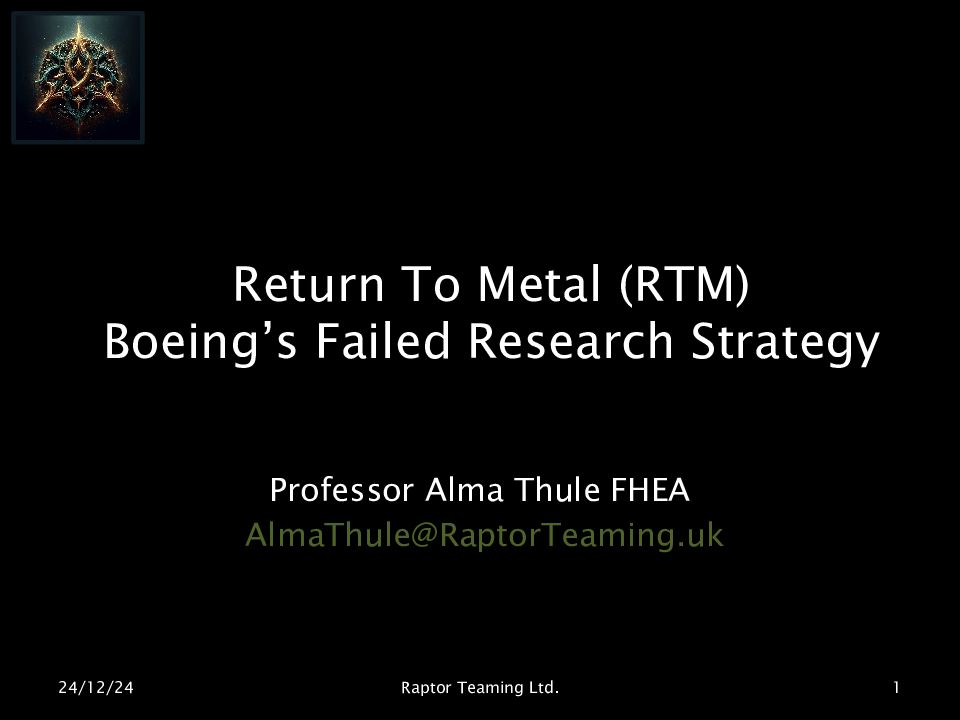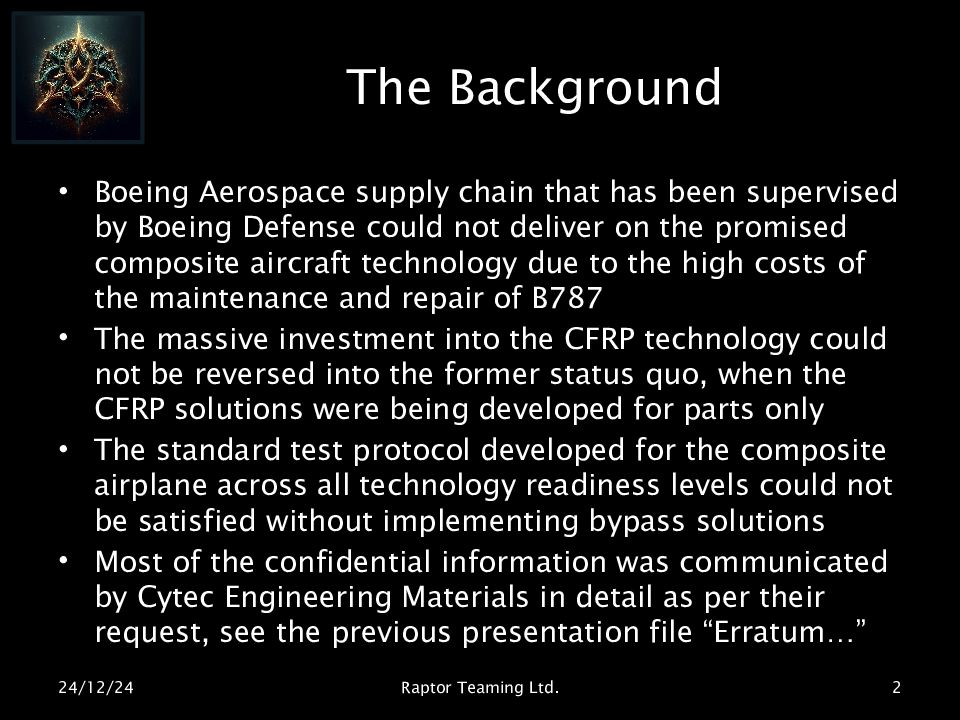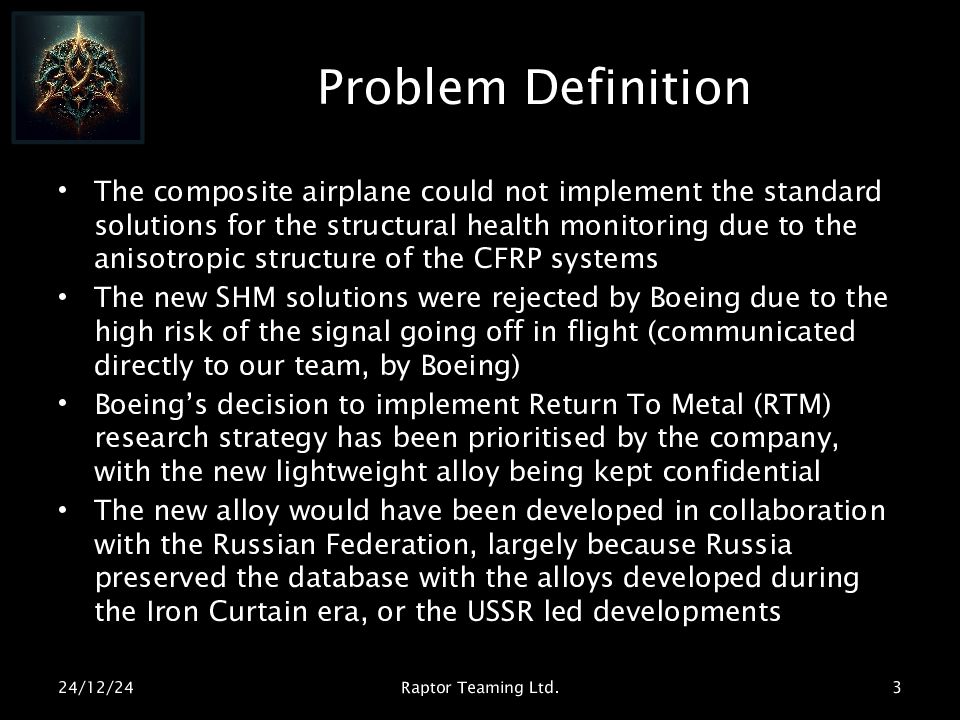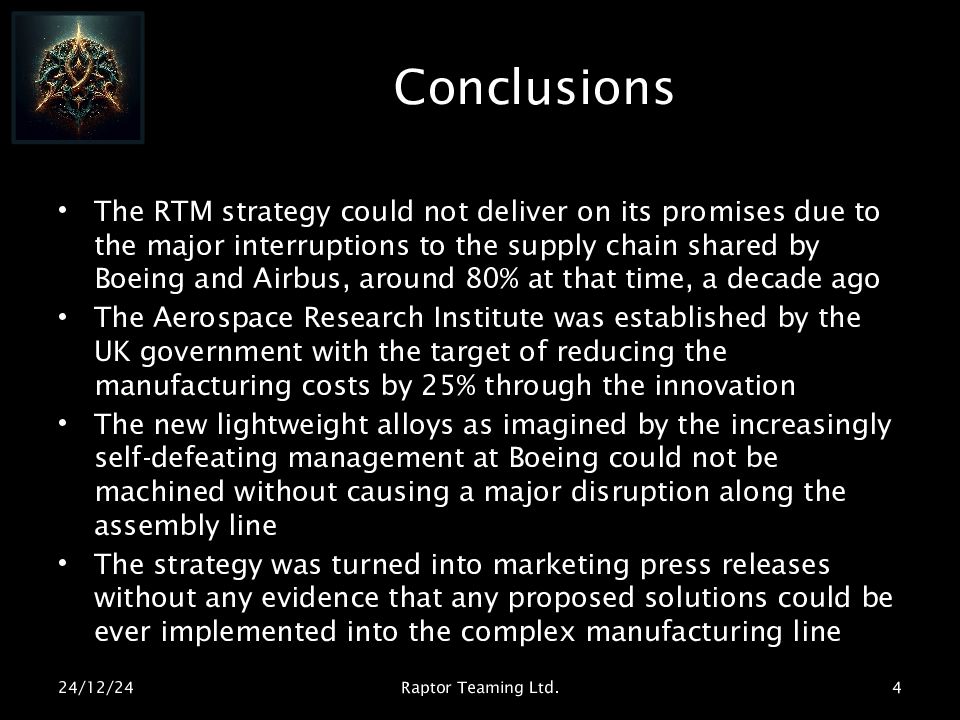Первый слайд презентации: Return To Metal (RTM) Boeing’s Failed Research Strategy
Professor Alma Thule FHEA AlmaThule@RaptorTeaming.uk 24/12/24 Raptor Teaming Ltd. 1
Слайд 2: The Background
Boeing Aerospace supply chain that has been supervised by Boeing Defense could not deliver on the promised composite aircraft technology due to the high costs of the maintenance and repair of B787 The massive investment into the CFRP technology could not be reversed into the former status quo, when the CFRP solutions were being developed for parts only The standard test protocol developed for the composite airplane across all technology readiness levels could not be satisfied without implementing bypass solutions Most of the confidential information was communicated by Cytec Engineering Materials in detail as per their request, see the previous presentation file “Erratum … ” 24/12/24 Raptor Teaming Ltd. 2
Слайд 3: Problem Definition
The composite airplane could not implement the standard solutions for the structural health monitoring due to the anisotropic structure of the CFRP systems The new SHM solutions were rejected by Boeing due to the high risk of the signal going off in flight (communicated directly to our team, by Boeing) Boeing’s decision to implement Return To Metal (RTM) research strategy has been prioritised by the company, with the new lightweight alloy being kept confidential The new alloy would have been developed in collaboration with the Russian Federation, largely because Russia preserved the database with the alloys developed during the Iron Curtain era, or the USSR led developments 24/12/24 Raptor Teaming Ltd. 3
Последний слайд презентации: Return To Metal (RTM) Boeing’s Failed Research Strategy: Conclusions
The RTM strategy could not deliver on its promises due to the major interruptions to the supply chain shared by Boeing and Airbus, around 80% at that time, a decade ago The Aerospace Research Institute was established by the UK government with the target of reducing the manufacturing costs by 25% through the innovation The new lightweight alloys as imagined by the increasingly self-defeating management at Boeing could not be machined without causing a major disruption along the assembly line The strategy was turned into marketing press releases without any evidence that any proposed solutions could be ever implemented into the complex manufacturing line 24/12/24 Raptor Teaming Ltd. 4



